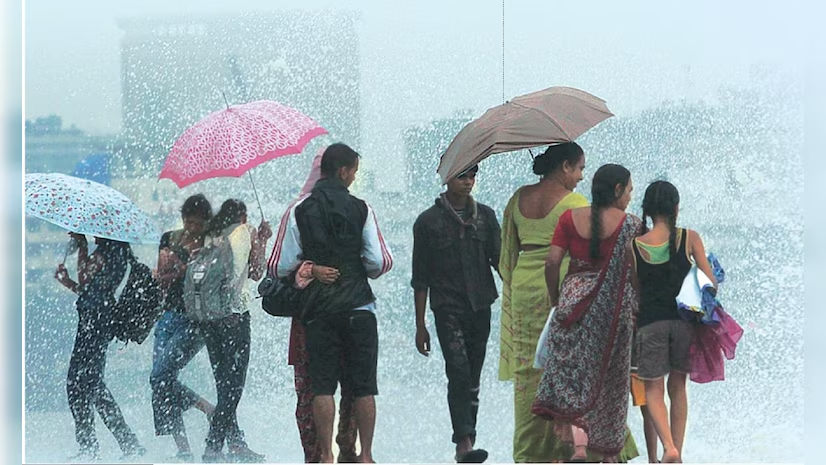Delhi Heatwave Lingers Even as IMD Keeps Predicting Rain.
Table of Contents
Delhi’s Weather Woes: Why Accurate Forecasts Remain Elusive

A Swelteringly Unpredictable May in Delhi
On May 20, 2025, Delhi residents braced for what the India Meteorological Department (IMD) described as a “pleasant day” with a yellow alert for thunderstorms, dust storms, and gusty winds. Instead, the capital endured oppressive heat, with stifling air that made the promised breezes feel like blasts from a furnace. Far from pleasant, the day left Delhiites questioning the reliability of weather predictions. This was not an isolated incident—earlier in the month, on May 2, a sudden downpour dumped 77 mm of rain, the second-highest single-day total for May since 1901, catching the city unprepared. The IMD’s failure to foresee such events highlights a persistent challenge in delivering accurate forecasts, leaving residents frustrated and vulnerable.
Delhi Weather : A History of Missed Predictions
The IMD’s struggles are not new. On June 28, 2023, Delhi faced a deluge of 91 mm of rain in just one hour, far exceeding the “light to moderate” rainfall forecast. The resulting floods paralyzed roads and disrupted daily life. Similarly, in December 2023, Tamil Nadu suffered catastrophic rainfall that claimed at least 10 lives, with the IMD underestimating the storm’s intensity until it was too late to issue timely warnings. These repeated missteps raise a critical question: why, after 150 years of operation, does the IMD continue to falter in predicting extreme weather events?
Delhi Weather : The Roots of India’s Weather Forecasting
Established in 1875 under British colonial rule, the IMD was tasked with unraveling the mysteries of the monsoon, a lifeline for India’s agriculture. Early meteorologists like Henry Francis Blanford and John Eliot attempted to link monsoon patterns with factors like Himalayan snow cover and global weather systems. Despite their efforts, famines persisted, with the 1899–1900 disaster claiming over a million lives after a failed forecast. In the early 20th century, Sir Gilbert Walker introduced statistical methods, identifying global pressure patterns like the Southern Oscillation. Yet, forecasting remained an imprecise science, often unable to prevent agricultural and economic losses.
Delhi Weather : How Accurate Are Today’s Forecasts?
The IMD’s monsoon predictions have historically been unreliable, with an average accuracy of just 42 percent for initial forecasts over the past two decades. This means that in most years since 2001, actual rainfall deviated significantly from projections. While recent years have shown improvement, with a standard error margin of ±5 percent for seasonal forecasts, public trust remains low. For instance, the 2025 monsoon outlook predicts rainfall at 105 percent of the Long Period Average, but such broad ranges offer little practical guidance. Short-range forecasts for extreme events, like thunderstorms, have improved by 40–50 percent due to advanced numerical models, yet unexpected deluges continue to catch the IMD off guard.
Delhi Weather : Evolving Forecasting Tools
For decades, the IMD relied on statistical models, such as Vasant Gowariker’s 1988 power regression model, which used 16 parameters but failed to predict droughts in 2002 and 2004. In 2007, the agency adopted ensemble statistical forecasting, reducing errors from 7.94 percent to 5.95 percent by 2018. The 2012 Monsoon Mission Coupled Forecasting System marked a leap forward, integrating land, ocean, and atmospheric data. In 2021, a multi-model ensemble system incorporated global climate models, further refining predictions. Despite these advances, the IMD claims a 21 percent reduction in seasonal forecast errors compared to the 1990s, but extreme weather events remain challenging to predict accurately.
Delhi Weather : Why Extreme Weather Defies Prediction
Thunderstorms and cloudbursts are notoriously difficult to forecast due to their rapid formation and erratic behavior. The IMD’s nowcasts, issued just hours in advance, often lack the precision needed for effective preparation. Systemic limitations also play a role—India’s weather station network and computing power lag behind those of countries like the United States or the United Kingdom. Under Mission Mausam, the IMD is expanding its radar network from 39 to 126 and introducing automated weather stations in major cities. New tools, such as microwave radiometers, aim to enhance data collection, but these upgrades are still in progress.
Delhi Weather : Comparing India to Global Standards
Unlike the U.S. National Weather Service or Europe’s weather agencies, the IMD often struggles with timely and clear communication. Warnings issued late or lacking specific guidance erode public confidence. For example, in July 2023, Bengaluru’s 132 mm of rain in four hours overwhelmed the city, despite a “moderate rain” alert. In contrast, countries like the Netherlands integrate forecasts with real-time infrastructure adjustments, such as smart drainage systems. India’s efforts to modernize its forecasting capabilities are promising, but closing the gap with global leaders will require sustained investment and improved public outreach.
The Stakes of Getting It Right
Accurate weather forecasting is more than a technical challenge—it’s a matter of public safety and economic stability. Unpredicted storms can disrupt lives, damage infrastructure, and strain emergency resources. As Delhi swelters through misforecasted “pleasant” days and braces for unexpected downpours, the IMD’s ongoing improvements offer hope, but the road to reliability is long. For now, residents must navigate the uncertainty, hoping for forecasts that match the reality outside their windows.
